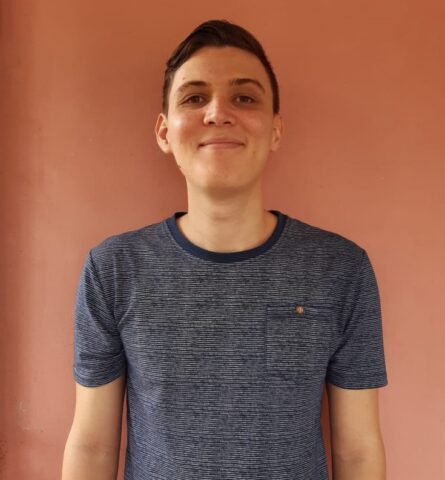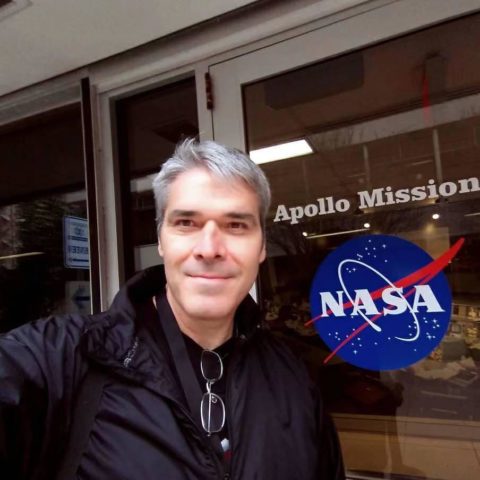Since the discovery of the first exoplanets in the early 1990s more than 4,000 have been confirmed. Bryan Villareal Alvarado is completing a remote internship with the Central American -Caribbean Bridge in Astrophysics program, which is connected to the Transiting Exoplanet Survey Satellite (TESS) team led by NASA and MIT. TESS is discovering more exoplanets ( also known as extrasolar planets) every year and will observe over 1 billion stars during its two year mission.

In this blog Bryan explains the science behind this fascinating work.
I was born in Guanacaste, and lived the first 18 years of my life there. Looking back at those times, I think I always had the curiosity for everything related to space. When I was in kindergarten, my dream job was to be an astronaut. However, that wasn’t out of an affinity for space exploration or a desire to expand the boundaries of human knowledge. Instead, my real goal was to know how “floating” in space felt like.
In any case, my “space aspirations” faded during my primary school years. I had a complicated set of priorities, which ended up with some mediocre years in high school, including a love-hate relationship with mathematics, which was “mended” in my final year.
I started my college at University of Costa Rica, but I needed a couple of poor career choices before I remembered those years where my dream job was floating in space. Of course, being an astronaut is not on my check-list anymore, but documentaries and articles about stars, planets, galaxies, atoms, molecules, time travel and such things always drew my attention. The perspective of not only knowing more about those things but actually “living from them” was what made me start a Physics career in 2014.
The courses you take along the way give you a wide perspective of the different areas of Physics and also make you wonder whether or not you see yourself engaging with some of them when you finish your Bachelor’s degree. For me, Astrophysics is the obvious choice. I’m still an undergraduate student, but with less than a year left before my graduation, I don’t see myself anywhere else. Because of that, I have been involved in some projects related to astronomy in my university, and one of them is the Remote Internship from the Central American – Caribbean Bridge in Astrophysics. Regardless of my choice to enter this field of study, I never imagined I would be searching for new planets one day.
For my internship with the Bridge, I am involved as a collaborator in an planet-searching project led by Dax Feliz, an American physicist from Manhattan, New York City. During his childhood, Dax had a strong curiosity for what lies beyond the light pollution of New York, and that led him to learn about basic astronomy on his own. Currently, he is a PhD candidate in Physics and Astronomy at Vanderbilt University, in Nashville, Tennessee.
So, what’s the planet-hunting thing about? TESS (Transiting Exoplanet Satellite Survey) is a mission led by NASA and MIT. The satellite was launched in 2018 and takes periodic images of (almost) the whole night sky. The benefit of using space telescopes is that far above Earth, our atmosphere won’t distort our images, allowing us unprecedented quality views of the sky. TESS will observe over 1 billion stars in its two-year mission. Currently, TESS has completed its mission and is now in Year 3 of its extended mission. As we know, the Sun is only one of the billions of stars in our galaxy, and a lot of them can host planets of every kind (known as “extrasolar planets” or “exoplanets” for short). But, how can we know if they do? There are many ways. In some exceptional cases, the planet can be directly imaged with powerful instruments. Another way is looking for “wobbles” from the star that may be caused by a large planet pulling its host star toward and away from us through gravitational attraction (the “radial velocity method”). However, the method we are focusing on is called the “transit method”.
Have you ever seen a solar eclipse? When the Moon passes right between Earth and the Sun, depending on the position, the Sun can be obstructed partially or totally. Of course, the Moon is close enough to totally block the Sun’s disk as seen from here on Earth. An eclipse does not necessarily mean that the view of the star will be completely blocked. For example, the passing of Mercury or Venus in front of the Sun is also observable from here. We, in our everyday lives, will see no difference at all. But if we
measured the brightness of the Sun at all times, we would notice a small decrease while the planet passes across the face of the star in our field of view. In that case, we have a planetary transit.
That’s where TESS jumps in. So, as we can imagine, the smaller (or dimmer) a star is, the larger amount of light is blocked by a transiting planet, and a hotter planet looks brighter. There are many different kinds of stars that vary by mass, radius and brightness. For our research, we focus primarily on these dimmer, smaller stars known as “red dwarfs”. As their name implies, they are among the smaller stars around (they have from 8% to 60% of the mass of the Sun) and the coldest ones (from 2000 to 3500 Celsius degrees. For comparison purposes, the surface of the Sun has a temperature of around 5500 Celsius degrees). Also, they are the most common type of stars, they represent about 70% percent of the stellar population in our galaxy.
The “habitable zone” defines a zone around a star where the conditions allow the presence of water in a liquid state on a planet’s surface. Logically, for colder and smaller stars, that zone is closer to the star itself. And, the closer a planet is to the star, the more frequent are its transits. That means, choosing red dwarfs as our targets give us a greater probability of finding planets with conditions similar to those of Earth. The focus on this kind of star provides a lot of benefits to better understanding the kinds of planets that can form in our galaxy and potentially finding habitable worlds in the process.
Actually, the discovery of a planet is a tricky process. Finding these periodic dimmings in the brightness of a star is only the first in a lengthy series of observation methods. The way to do this is constructing an automated computer algorithm that is able to make a light curve, that is, a graph that shows you the brightness of a star as time passes, kind of like this:

The data collected by the satellite is publicly available at Mikulski Archive for Space Telescopes, hosted by the Space Telescope Science Institute. There are two “official” pipelines reviewed by vetting teams (the people in charge of visually checking data and voting on where a light curve has a transiting planet or not):
NASA’s Science Processing Operations Center and MIT’s Quick Look Pipeline. However, it is possible for other teams to build their own. That’s where we get in: We are in the final stages of development of our pipeline and the first results are being produced. They must be analyzed by a group of people in order to be considered a “planet candidate”.
Not every brightness decrease we see means we found a planet. Stars have various kinds of activity, and sometimes they show spots or flares.

As the star rotates, the spots can cause some decreases in the light curve, and the flares can lead
to some peaks. Also, there are some kinds of stars whose size oscillates in short periods of time. Those are called “variable stars”.
There are some cases where 2 stars orbit each other. Those systems, called “binary stars”, are actually quite common, and when one of them is found, the light curve can show periodic dimmings of 2 different sizes.
As you can see, there are lots of things that must be taken into account in order to consider a transit as coming from a planet candidate. If this is the case, some follow-up observations are needed, using some of the other methods mentioned before.
The transit method has proven to be the most effective in terms of the number of exoplanets that have been found using it. Dax himself has been successful, as he was part of the team that confirmed, using data from TESS, the existence of a planet orbiting the star AU Mic this year, as well as a co-author on several planets from the Kilodegree Extremely Little Telescope (KELT) survey. Our search is just beginning!

Bruce Callow is a Canadian teacher and co-author of the book To the Stars: Costa Rica in NASA. He does space education outreach work on behalf of NASA.

